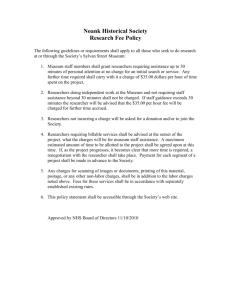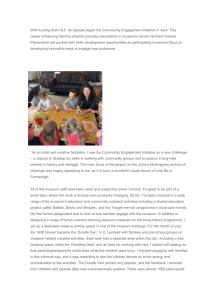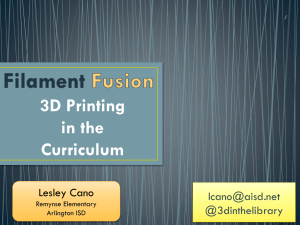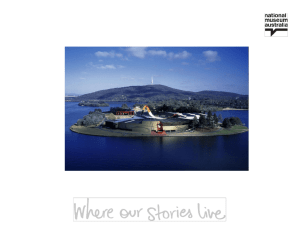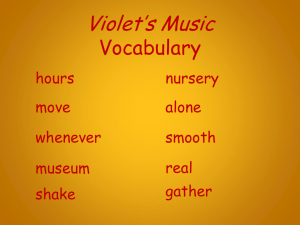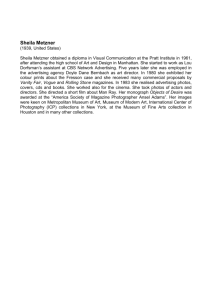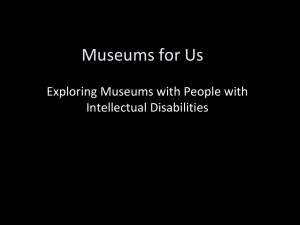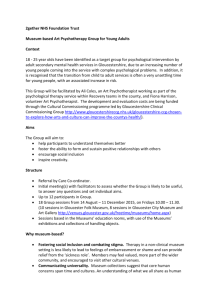2014-09-11_NLL_Poster_AISL_PI Meeting_Aug2014
advertisement
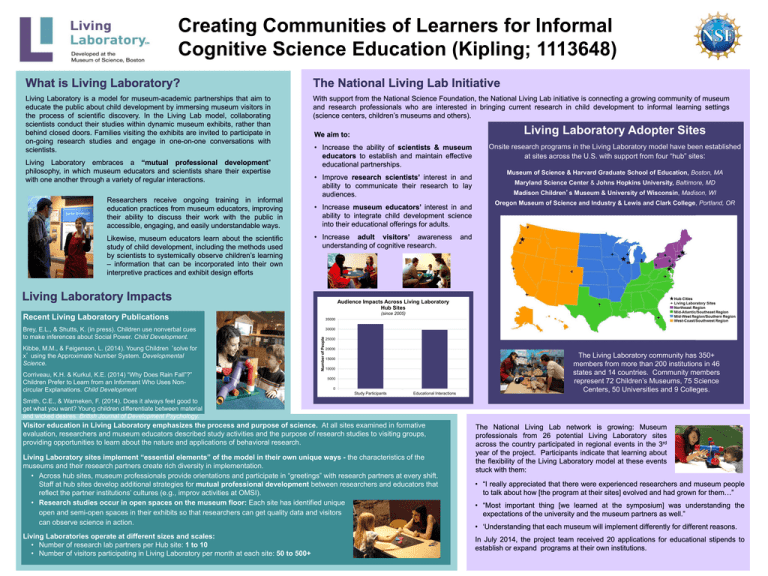
Creating Communities of Learners for Informal Cognitive Science Education (Kipling; 1113648) Living Laboratory Adopter Sites Onsite research programs in the Living Laboratory model have been established at sites across the U.S. with support from four “hub” sites: Museum of Science & Harvard Graduate School of Education, Boston, MA Maryland Science Center & Johns Hopkins University, Baltimore, MD Madison Children’s Museum & University of Wisconsin, Madison, WI Oregon Museum of Science and Industry & Lewis and Clark College, Portland, OR Recent Living Laboratory Publications Brey, E.L., & Shutts, K. (in press). Children use nonverbal cues to make inferences about Social Power. Child Development. Kibbe, M.M., & Feigenson, L. (2014). Young Children ‘solve for x’ using the Approximate Number System. Developmental Science. Corriveau, K.H. & Kurkul, K.E. (2014) “Why Does Rain Fall”?” Children Prefer to Learn from an Informant Who Uses Noncircular Explanations. Child Development Smith, C.E., & Warneken, F. (2014). Does it always feel good to get what you want? Young children differentiate between material and wicked desires. British Journal of Development Psychology. Visitor education in Living Laboratory emphasizes the process and purpose of science. At all sites examined in formative evaluation, researchers and museum educators described study activities and the purpose of research studies to visiting groups, providing opportunities to learn about the nature and applications of behavioral research. Living Laboratory sites implement “essential elements” of the model in their own unique ways - the characteristics of the museums and their research partners create rich diversity in implementation. • Across hub sites, museum professionals provide orientations and participate in “greetings” with research partners at every shift. Staff at hub sites develop additional strategies for mutual professional development between researchers and educators that reflect the partner institutions’ cultures (e.g., improv activities at OMSI). • Research studies occur in open spaces on the museum floor: Each site has identified unique open and semi-open spaces in their exhibits so that researchers can get quality data and visitors can observe science in action. Living Laboratories operate at different sizes and scales: • Number of research lab partners per Hub site: 1 to 10 • Number of visitors participating in Living Laboratory per month at each site: 50 to 500+ The Living Laboratory community has 350+ members from more than 200 institutions in 46 states and 14 countries. Community members represent 72 Children’s Museums, 75 Science Centers, 50 Universities and 9 Colleges.



